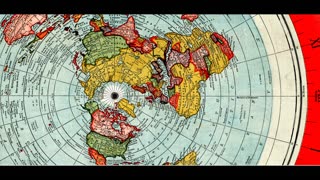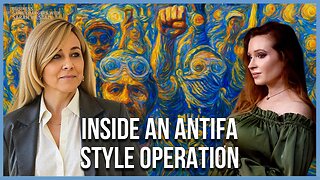Premium Only Content

RESTORED REPUBLIC VIA A GCR UPDATE AS OF NOVEMBER 2, 2023
▶️ Video from Restored Republic
▶️ Jewish denominations: A brief guide for the perplexed: Full Info in This link; https://theconversation.com/jewish-denominations-a-brief-guide-for-the-perplexed-207297
▶️ As a scholar of modern Jewish history, religion and politics, I am often asked to explain the differences between Judaism’s major denominations. Here is a very brief overview: Rabbinic roots; Two thousand years ago, Jews were divided between competing sects all based on the Jewish scriptures, but with different interpretations. After the Romans destroyed the Jerusalem Temple in 70 C.E., one main group, who called themselves “rabbis” – sages or teachers – began to dominate. What we now know as “Judaism” grew out of this group, technically called “Rabbinic Judaism.”
Rabbinic Judaism believed that God gave Jewish teachings and scriptures to Moses at Mt. Sinai, but that they came in two parts: the “written law” or “written Torah” and the “oral law” or “oral Torah.” The oral Torah is a vast body of interpretations that expands upon the written Torah and is the source for most of the rules and theology of Rabbinic Judaism.
Fearful that these traditions might be lost, the early rabbis began the process of writing them down, culminating in two texts called the Mishna and the Talmud. This corpus became the foundation of rabbinic literature.
Read news coverage based on evidence, not tweets
The rabbis assured the Jews that although the temple’s destruction was devastating, Jews could continue to serve God through study, prayer and observing God’s commandments, called “mitzvot.” Someday, they promised, God would send the Messiah, a descendant of King David who would rebuild the temple and return the exiled Jews to the land of Israel.
Historic turning point
There were tensions in Rabbinic Judaism from the outset. For example, starting in the Middle Ages, a Jewish group called the Karaites challenged the rabbis’ authority by rejecting the oral Torah.
Even within the rabbinic tradition, there were regular disagreements: between mystics and rationalists, for example, debates over people claiming to be the messiah; and differences in customs between regions, from medieval Spain to Poland to Yemen.
Still, Rabbinic Judaism remained a more or less united religious community for some 1,500 years – until the 19th century.
Around that time, Jews began to experience emancipation in many parts of Europe, acquiring equal citizenship where they had previously constituted a separate, legal community. Meanwhile, thousands – eventually millions – of Jews moved to the United States>
Full Info in This link; https://theconversation.com/jewish-denominations-a-brief-guide-for-the-perplexed-207297
-
 10:07
10:07
Knowledge They Don't Want You To Know
8 months agoAntarctica 24 Hours Sun. Flat Earth Never Dies
2.38K4 -
 9:13:12
9:13:12
The Charlie Kirk Show
19 hours agoLIVE NOW: Building A Legacy, Remembering Charlie Kirk
2.15M929 -
 1:55:20
1:55:20
The White House
12 hours agoPresident Trump Participates in the Memorial Service for Charlie Kirk
99.2K90 -
 1:02:41
1:02:41
Sarah Westall
10 hours agoDomestic Terror Operation: Death Threats, Smear Campaigns, Gang Stalking w/ Journalist Sarah Fields
52.2K9 -
 1:51:40
1:51:40
Nerdrotic
10 hours ago $20.05 earnedGobekli Tepe Discovery and "Reconstruction" | Forbidden Frontier #118
84.3K10 -
 29:07
29:07
Tactical Advisor
11 hours agoATF Changes Ruling on SBR & Tacpack unboxing | Vault Room Live Stream 039
93.8K18 -
 2:00
2:00
From Zero → Viral with AI
16 hours ago $4.80 earnedAre You Being Left Behind? Why AI Marketing is No Longer Optional
53.5K8 -
 9:10
9:10
BlackDiamondGunsandGear
14 hours agoI Finally Got it! / Rough Country Build Ep.1
34.5K9 -
 9:44
9:44
Millionaire Mentor
3 days agoCharlie Kirk Brings Woke Student To STUTTERING Over White Privilege Lies
36.1K11 -
 24:12
24:12
MudandMunitions
15 hours agoOff-Roading with NYPrepper Wild Elk & PA’s Most Remote Backroads
22.8K1